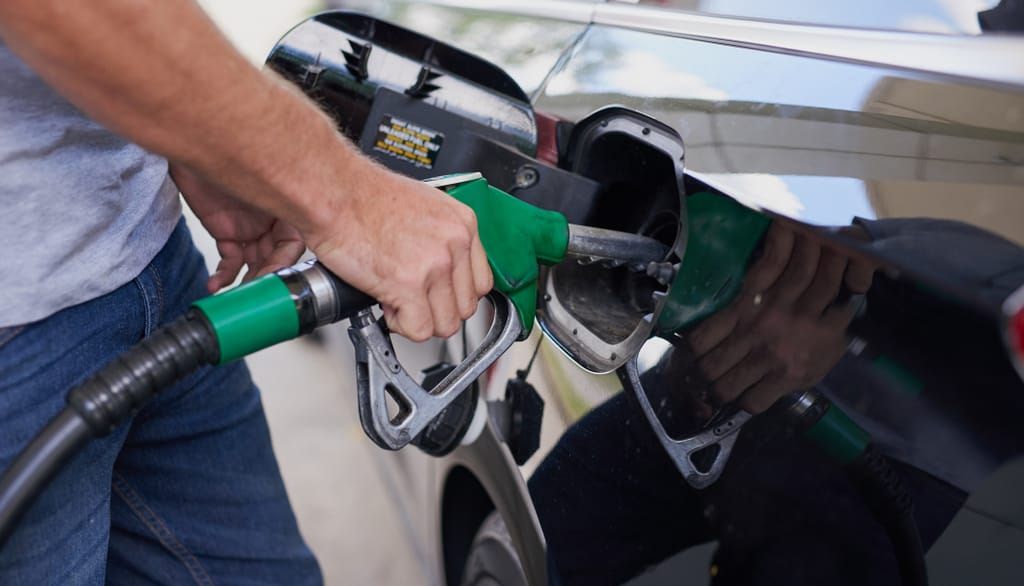Pay at Pump is a system that allows customers to pay for their fuel at the pump itself, so they don’t have to go to the kiosk or into the shop to settle up.
Until recently, if you used Pay at Pump, a small amount of money would be temporarily reserved on your card. This was the case for most cards and most banks. But a new system has now been introduced, by MasterCard, Visa and American Express.
The new authorisation amount is up to £120 on your card and this will apply to everyone, including Starling customers. In fact, the amount held may often be less than £120 - see later on for more on that. The idea is to ensure you have sufficient funds to afford the fuel.
The new authorisation limits may take some time to roll out to all petrol stations.
How does it work?
When you slot your card into the machine at the fuel pump, a certain amount will be reserved on your card. In the example below, we’ll say that this amount is £120.
You can then fill up your car or van and once you’re finished, the petrol station (known as the merchant) will tell Starling exactly how much you’ve spent on fuel. We’ll then charge this amount to your Starling card and the remainder of the £120 is released back to you. The process should usually only take a few minutes.
In some cases, processing the payment can take up to an hour. It all depends on how quickly the merchant tells Starling how much you’ve spent. Don’t worry though, you won’t have to wait around at the petrol station while the payment is processed.
Once everything has gone through, we’ll send a handy notification to tell you that the money for your fuel has left your account. You’ll be able to spend the remainder of the £120 that was previously reserved for your fuel.
The temporary amount held on my card was less than £120?
The exact amount may vary depending on retailer and whether Mastercard, Visa, American Express or other is used. It also depends on which retailer you buy your petrol from.
Why has Pay at Pump changed?
Paying for fuel at the pump should be an easy and stress-free solution. But under the previous system, it often led to people accidentally going into an unarranged overdraft or exceeding their overdraft limit. And that led to extra fees and stress over how to pay for other things.
The new process helps makes sure that you’ll have enough to cover your fuel before you start to fill up your vehicle.
What happens if I don’t have £120 in my Starling account?
If you have less than £120 in your Starling account, you’ll still be able to use Pay at Pump. But we’ll use a different process, which is called partial authorisation.
This involves checking your bank balance to see how much you have available to spend and communicating this to the pump, which should then cap how much you can spend on fuel. For example, if you have £20 in your Starling account, you’ll be able to buy up to £20 worth of fuel.
Similar to the process that involves reserving £120 and then charging the exact amount, when you have less than £120, we’ll freeze your total available balance and release this when the merchant tells us the exact amount you’ve spent. All merchants should accept partial authorisation, although we’re aware that some merchants may not do this.
Do you need to check my credit score to allow Pay at Pump?
No, we don’t need to run any credit checks before allowing you to pay for fuel at a pump.
What if there’s a delay in the exact amount being charged?
If there’s a delay in the communication between the merchant (the petrol station in most cases) and Starling, this can impact how long it takes for funds not spent on fuel to be released.
For example, if you’ve spent £56 on petrol, the full £120 will be reserved until the merchant communicates with Starling that you spent £56 and need £64 to be released.
If you do experience a delay, you can find more information on why over at our FAQs. We don’t recommend going to speak to people working in the petrol station as they won’t have access to the information needed to resolve the issue. You can read more about this new process for Pay at Pump on the MasterCard website.
Article amended 7 March 2023
